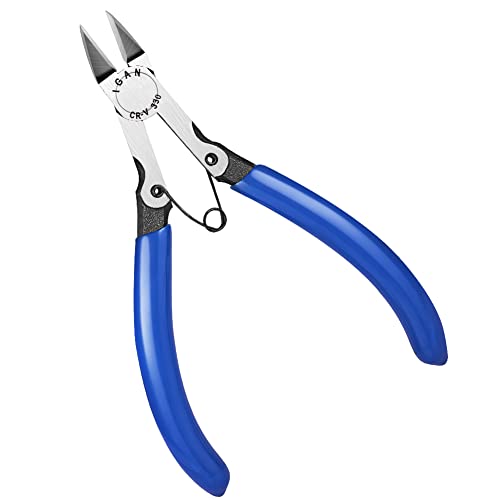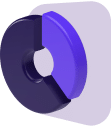3D printing is becoming ever more popular, but the one caveat is that you will most definitely have many support structures if you print something extravagant.
If not removed correctly, this could damage the final look of your model.
How do you remove supports from a 3D print? For soluble support structures made out of PVA, Hydrofill, or HIPS, set your model in lukewarm water and let them dissolve, leaving your model intact. For breakaway support structures, use a combination of flush cutters, files, sandpaper, and Chapstick.
This article will take you through the various types of support structures and how to remove them correctly and easily, depending on the type.
We’ll also take a look at the correct tools to use and if updating your software can help with any settings for support structures.
Types of 3D Print Support Structures
There are two types of support structures when it comes to 3D printing. Knowing these will be beneficial in understanding how to remove them more easily. They are:
- Overhang support structures.
- Bridge support structures.
Overhang support structures protrude outward from the 3D model.
Bridge support structures are lines or a series of lines that horizontally suspend and connect two points of the 3D structure together.
There are two types and methods that you can use in order to remove the support structures from your 3D model.
Breakaway Support Structures and How To Remove Them
These support structures are typically made from the same material as the model.
In other instances, individuals will use similar strength material but that which does not adhere to the primary material with such force.
Using two materials is optimal and makes the process of removing the support structures much easier.
However, this is only possible when you use a double-extrusion 3D printer. (Read this to see some fantastic dual-extruder printers.)
Breakaway support structures will have a much lower density than that of your main 3D structure and will typically be thin perimeters or walls.
What To Do
What you want to do first is remove the easily accessible support structures with your hands, making sure not to remove them forcibly.
These support structures should come away easily and without any effort.
The next step is to cut the remaining support structures with your flush cutters (I’ve listed the best tools you will need below in order for you to remove these types of support structures).
Make sure not to cut the structures too close to the model because this can cause pitting and will be challenging to remove with sandpaper.
How To Remove and Fix Remaining Marks
At this point, you should have your 3D model with little extrusions that are the remains of the support structures.
You will use files and sandpaper in a circular motion to bring these extrusions down to the level of your primary 3D model.
It is essential that you do not leave deep sanding marks because the goal here is to blend the extrusions into the model as much as you can.
Once you have finished, you will now use high-grit sandpaper to blend further the sanded areas where you filed down the extrusions.
You are not done yet, and the next step is one that many individuals are unaware of.
You will use Chapstick to blend the sanded areas of the support structures with the 3D model.
You will use your finger to apply the Chapstick rather than rubbing it on using the entire product.
Remember that less is more in this instance.
Special note: Skip the Chapstick if you intend to paint your model because it may cause the paint not to adhere correctly.
You can check out the following video for a visual aid reference covering how to remove breakaway support structures.
Best Tools To Use for Removing Supports
Below are the best tools for removing breakaway support structures. These tools can be found on Amazon at affordable prices.
Soluble Support Structures and How To Remove Them
Besides breakaway support structures, you can have soluble structures made from special filaments that will dissolve in a chemical bath after printing (post-printing).
This process will not harm the main 3D model and leave it fully intact.
When using one of the most popular materials for 3D printing, PLA (Polylactic Acid), you can use PVA (Polyvinyl Alcohol), Hydrofill, or HIPS (High Impact Polystyrene) as soluble support structures.
One thing to note is that HIPS has a high printing temperature compared to that of PLA, which can make it cumbersome and difficult to use with PLA.
When printing some complex models, sometimes the support structures are too complex and make it too difficult or time consuming to remove.
This is where soluble support structures come in handy.
What To Do
Remember that this method can only be used with double extrusion 3D printers.
Removing these types of support structures is as easy as leaving your model in a bowl of lukewarm water. That is because PVA and Hydrofill are both soluble in water.
Any residue will also be easily removed because the 3D structure you have built and left in the water should be warm and all you would need to do is wipe it away.
This process does not require and sanding; however, any holes or gaps need to be dealt with in conventional post-processing.
Will Updating Software Make Removing Supports Easier?
There are many 3D printing software applications that you can get your hands on nowadays.
Some of them include Fusion 360, Tinkercad, Onshape, Solid Edge, Meshmixer, and Blender, just to name a few.
Depending on the 3D printer you buy, it will come with software that you can install and use.
However, as I said, you get many various 3D applications, and they all support or most likely support the STL format.
Any CAD software will typically produce this format, so you can choose almost any software you like.
You should get one that is well known and used by many individuals and one that is continuously updated.
Typically, the software will have many settings for various aspects of 3D printing, and one is for support structures.
Cura is one such program that offers settings that allow you to adjust and change the support structure settings making them easier to adjust and remove.
Typically when software gets an update, many aspects of it are fixed, and new features will be integrated.
This doesn’t mean that with every update of your specific 3D printer software you will have new options allowing you to adjust your support structures.
However, seeing as this aspect of 3D printing is a central element, it is wise to keep your software up to date in case any changes are made.
Conclusion
We discovered that there are two types of support structures when it comes to 3D printing, and they are namely overhanging and bridge support structures.
Both types can be removed in one of two ways depending on the material used and the printer you have.
If you have a dual extrusion 3D printer, it is best to use another material for the support structures that are soluble in water like PVA, Hydrofill, or HIPS. This method is the easiest.
If you are typically using PLA, then with the correct tools (which I listed for you) you can easily remove the breakaway support structures.
It’s as easy as filing them down and sanding them to blend in with your 3D model and then using Chapstick to finish off your model.
Lastly, it would help if you always kept your 3D printer software up to date.
This is because any update could include options or settings that would allow you to adjust or change the support structures, perhaps allowing you to remove them more easily.
Sources:









